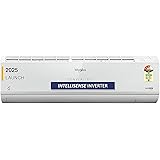What is RDW?
RDW, or Red Cell Distribution Width, is a blood test that measures the variation in size of red blood cells. It’s a valuable tool for diagnosing certain blood disorders, especially those affecting the shape and size of red blood cells.
Why is a High RDW Significant?
A high RDW indicates that there’s a significant difference in the size of your red blood cells. This can be a sign of various underlying conditions, including:
- Iron-deficiency anemia: This is the most common cause of a high RDW. When your body doesn’t have enough iron, it struggles to produce healthy red blood cells, leading to a variation in size.
- Vitamin B12 deficiency: This vitamin is essential for the production of red blood cells. A deficiency can result in a RDW blood test high.
- Folic acid deficiency: Similar to vitamin B12, folic acid is crucial for red blood cell production. A deficiency can also lead to a high RDW.
- Thalassemia: This is an inherited blood disorder that affects the production of hemoglobin, a protein in red blood cells.
- Liver disease: Certain liver diseases can interfere with the production of red blood cells, resulting in a high RDW.
- Chronic inflammation: Long-term inflammation can impact red blood cell production.
Additional Blood Tests to Consider
When your doctor suspects a high RDW, they may order additional blood tests to pinpoint the underlying cause. These tests often include:
- MPV (Mean Platelet Volume): This test measures the average size of platelets, which are tiny cells that help with blood clotting. It can be helpful in diagnosing conditions like thrombocytopenia, where there are fewer platelets than normal.
- RBC (Red Blood Cell Count): This test counts the number of red blood cells in your blood. A low RBC count can be a sign of anemia.
- WBC (White Blood Cell Count): This test measures the number of white blood cells, which help fight infections. An elevated WBC count can indicate inflammation or infection.
Read More: MCH blood test high alcohol
Treatment for High RDW
The treatment for a high RDW depends on the underlying cause. For example:
- Iron-deficiency anemia: Iron supplements can help restore iron levels and improve red blood cell production.
- Vitamin B12 or folic acid deficiency: Supplements can correct these deficiencies.
- Thalassemia: There’s currently no cure for thalassemia, but regular blood transfusions and certain medications can help manage symptoms.
- Liver disease: Treating the underlying liver disease can help improve red blood cell production.
When to See a Doctor
If you’re experiencing symptoms such as fatigue, weakness, shortness of breath, or pale skin, it’s important to see a doctor. These symptoms could be signs of a high RDW or an underlying blood disorder.
Conclusion
A high RDW is a valuable indicator of potential blood disorders. By understanding the causes and treatments, you can work with your doctor to address any underlying issues and improve your overall health.
Boldfit Water Bottles Stainless Steel Water Bottle 1 Litre Steel Water Bottles for School, Office, Home, Gym 1 Litre Water Bottle for Men Leakproof, Rust free Steel Bottle -1000 ml Water Bottle Black
₹199.00 (as of 4 April, 2025 16:53 GMT +05:30 - More infoProduct prices and availability are accurate as of the date/time indicated and are subject to change. Any price and availability information displayed on [relevant Amazon Site(s), as applicable] at the time of purchase will apply to the purchase of this product.)Whirlpool 1.5 Ton 3 Star, Magicool Inverter Split AC (MAGICOOL 15T 3S INV CNV S5K2PP0, Copper, Convertible 4-in-1 Cooling Mode, HD Filter White)
₹32,490.00 (as of 4 April, 2025 16:52 GMT +05:30 - More infoProduct prices and availability are accurate as of the date/time indicated and are subject to change. Any price and availability information displayed on [relevant Amazon Site(s), as applicable] at the time of purchase will apply to the purchase of this product.)COFENDY Portable Mini Cooler Rechargeable Air Conditioner Water Cooler Small AC for Office, Home Cooling, Summer Fan Evaporative Brush USB Compatible Stickers Cleaning 3 Fast Speed (Mini AC)
(as of 4 April, 2025 16:52 GMT +05:30 - More infoProduct prices and availability are accurate as of the date/time indicated and are subject to change. Any price and availability information displayed on [relevant Amazon Site(s), as applicable] at the time of purchase will apply to the purchase of this product.)ATOM Digital Kitchen Food Weighing Scale For Healthy Living, Home Baking, Cooking, Fitness & Balanced Diet. | 1 Year Warranty | 10Kg x 1gms with 2 Batteries Included, SF400/A121, Color May vary
₹205.00 (as of 4 April, 2025 16:53 GMT +05:30 - More infoProduct prices and availability are accurate as of the date/time indicated and are subject to change. Any price and availability information displayed on [relevant Amazon Site(s), as applicable] at the time of purchase will apply to the purchase of this product.)Chandan Wood Wooden Piggy Bank for Kids & Adults, Coin Box with Carved Design, Savings Box, Mini Bank, Donation Box, Smart Money Box, Wooden Coin Box, Money Saver, Piggy Bank with Numbers (1)
₹499.00 (as of 4 April, 2025 16:52 GMT +05:30 - More infoProduct prices and availability are accurate as of the date/time indicated and are subject to change. Any price and availability information displayed on [relevant Amazon Site(s), as applicable] at the time of purchase will apply to the purchase of this product.)Discover more from The General Post
Subscribe to get the latest posts sent to your email.





